-
 Bitcoin
Bitcoin $81,489.5635
-1.67% -
 Ethereum
Ethereum $1,695.4651
-5.18% -
 Tether USDt
Tether USDt $0.9995
-0.01% -
 XRP
XRP $2.0520
-3.51% -
 BNB
BNB $570.9477
-3.69% -
 USDC
USDC $0.9998
-0.01% -
 Solana
Solana $112.8204
-4.54% -
 Dogecoin
Dogecoin $0.1592
-5.32% -
 TRON
TRON $0.2383
0.43% -
 Cardano
Cardano $0.6186
-5.05% -
 UNUS SED LEO
UNUS SED LEO $8.9764
-1.16% -
 Toncoin
Toncoin $3.2746
-0.41% -
 Chainlink
Chainlink $11.9775
-5.49% -
 Stellar
Stellar $0.2502
-0.32% -
 Avalanche
Avalanche $16.9747
-5.28% -
 Shiba Inu
Shiba Inu $0.0...01172
-3.57% -
 Sui
Sui $2.0344
-8.21% -
 Hedera
Hedera $0.1516
-5.77% -
 Polkadot
Polkadot $3.8232
-2.49% -
 MANTRA
MANTRA $6.0922
-3.03% -
 Litecoin
Litecoin $76.7063
-6.65% -
 Bitcoin Cash
Bitcoin Cash $291.2979
-2.40% -
 Dai
Dai $0.9999
-0.02% -
 Ethena USDe
Ethena USDe $0.9986
-0.05% -
 Bitget Token
Bitget Token $4.2790
-3.53% -
 Pi
Pi $0.6120
-0.50% -
 Monero
Monero $203.4248
-5.68% -
 Hyperliquid
Hyperliquid $10.9016
-6.10% -
 Uniswap
Uniswap $5.4430
-6.01% -
 OKB
OKB $52.1906
1.63%
What is decentralization and how does blockchain achieve decentralization?
Blockchain uses distributed ledgers, cryptographic hashing, and consensus mechanisms to decentralize power, mitigating risks inherent in centralized systems by distributing trust and control among network participants.
Feb 28, 2025 at 10:37 am
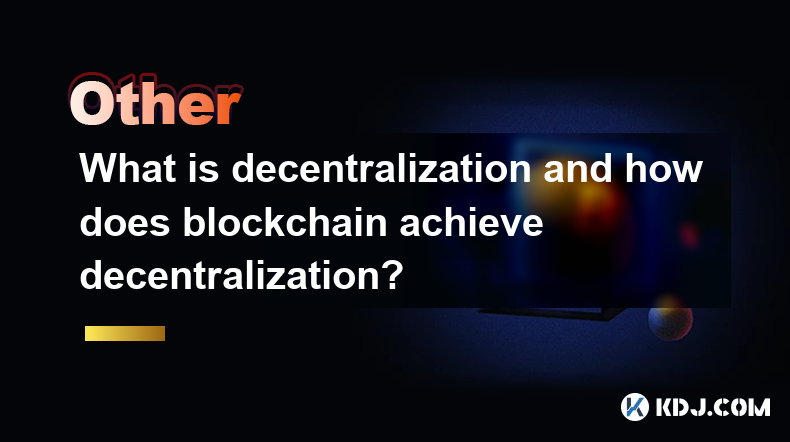
What is Decentralization and How Does Blockchain Achieve Decentralization?
Key Points:
- Decentralization Defined: Decentralization, in the context of cryptocurrency and blockchain, refers to the distribution of power and control away from a central authority (like a government or a single corporation) to a network of participants. This contrasts with centralized systems where a single entity holds ultimate authority and control.
- Blockchain's Role: Blockchain technology is the primary mechanism enabling decentralization in the cryptocurrency space. Its distributed ledger structure, cryptographic security, and consensus mechanisms work together to prevent any single entity from dominating or controlling the network.
- Achieving Decentralization: Blockchain achieves decentralization through several key components: distributed ledger technology, cryptographic hashing, consensus mechanisms (like Proof-of-Work or Proof-of-Stake), and a peer-to-peer network. Each of these components plays a crucial role in maintaining the integrity and decentralization of the system.
- Challenges to Decentralization: While blockchain strives for decentralization, various factors can compromise this ideal. These include the concentration of mining power (in Proof-of-Work systems), the influence of large validators (in Proof-of-Stake systems), and the potential for regulatory intervention.
Understanding Decentralization in the Cryptocurrency Context:
- The Centralized Alternative: Before delving into blockchain's approach, let's consider the centralized alternative. In a centralized system, a single entity (e.g., a bank, a government, or a corporation) controls all aspects of the system. This entity manages data, transactions, and access. This control brings several inherent risks: single points of failure, susceptibility to censorship, manipulation, and lack of transparency. A single point of failure means if the central entity is compromised or fails, the entire system collapses. Censorship is possible because the central authority can block or alter transactions at will. Manipulation is a threat because the central entity can alter data or transactions for its benefit. Transparency is limited because the central entity controls the information flow.
- Decentralization as a Solution: Decentralization aims to mitigate these risks by distributing control across a network of participants. No single entity holds absolute power. This distribution of power makes the system more resilient to attacks, censorship, and manipulation. If one part of the network fails, the rest can continue operating. The increased transparency and the lack of a central authority to manipulate data enhances trust and security. The more participants involved in the system, the more robust and secure it becomes. This increased robustness reduces reliance on a single point of control and improves the overall system resilience. The open and transparent nature of a decentralized system helps to build trust among participants, fostering a more collaborative and secure environment.
- The Role of Trust in Decentralization: In centralized systems, trust is placed in the central authority. In decentralized systems, trust is distributed among the network participants and the cryptographic mechanisms underpinning the system. This means that trust is not placed in a single entity but in the collective strength and integrity of the network. This shift in trust is a fundamental aspect of decentralization, and it helps to create a more resilient and trustworthy system. The cryptographic algorithms used to secure the network provide a strong foundation for trust, ensuring that transactions and data are tamper-proof and verifiable. The distributed nature of the ledger further enhances trust by making it extremely difficult for any single entity to alter or manipulate the data.
How Blockchain Achieves Decentralization:
- Distributed Ledger Technology (DLT): At the heart of blockchain's decentralization lies its distributed ledger. Instead of a single, centralized database, a blockchain replicates its data across many computers (nodes) in a peer-to-peer network. Each node maintains a complete copy of the blockchain, ensuring redundancy and resilience. If one node fails, others can continue to operate and maintain the integrity of the system. This replication prevents any single entity from controlling or manipulating the data. The distributed nature of the ledger makes it incredibly difficult to alter or delete information, enhancing data integrity and security. This distributed architecture is the foundation upon which blockchain's decentralized nature is built.
- Cryptographic Hashing: Blockchain uses cryptographic hashing to link blocks together in a chain. Each block contains a cryptographic hash of the previous block, creating an immutable record of transactions. Altering a single transaction would require changing all subsequent blocks, a computationally infeasible task due to the cryptographic strength of the hashing algorithms. This process ensures that the blockchain is tamper-proof and that the integrity of the data is maintained. The cryptographic security provided by hashing is essential for maintaining the trustworthiness and reliability of the blockchain. The use of cryptographic techniques adds another layer of security to the blockchain, making it very resistant to attacks and fraud.
- Consensus Mechanisms: Consensus mechanisms are crucial for ensuring that all nodes in the network agree on the state of the blockchain. Proof-of-Work (PoW) and Proof-of-Stake (PoS) are two prominent examples. PoW relies on computational power to validate transactions, while PoS relies on the amount of cryptocurrency staked by validators. These mechanisms ensure that no single entity can unilaterally add or modify blocks, preventing manipulation and maintaining the integrity of the system. The choice of consensus mechanism significantly impacts the security, scalability, and energy efficiency of the blockchain. The consensus mechanism ensures that all participants agree on the validity of transactions and the state of the blockchain, promoting trust and preventing fraudulent activities.
- Peer-to-Peer (P2P) Network: A blockchain operates on a P2P network, where nodes communicate directly with each other without the need for a central server. This eliminates single points of failure and censorship. Each node can connect to multiple other nodes, creating a robust and resilient network. The decentralized nature of the P2P network allows for greater resilience and security, making it more difficult for a single entity to control or manipulate the system. The peer-to-peer architecture is fundamental to the decentralized nature of blockchain, ensuring that no single entity has control over the network. This distribution of power ensures the system's resilience and prevents single points of failure, a critical element of decentralization.
Challenges to Blockchain Decentralization:
- Mining Pool Centralization (PoW): In Proof-of-Work blockchains, the concentration of mining power in large mining pools can threaten decentralization. A few powerful pools could potentially control a significant portion of the network's hash rate, giving them undue influence. This concentration of power could lead to censorship or manipulation of the network. The increasing dominance of large mining pools raises concerns about the long-term decentralization of Proof-of-Work blockchains.
- Validator Centralization (PoS): Similarly, in Proof-of-Stake blockchains, the concentration of staked coins in the hands of a few large validators could lead to centralization. These validators have significant influence over the network's operation and could potentially collude to manipulate the system. The distribution of staked coins among validators is crucial for maintaining the decentralization of Proof-of-Stake blockchains. An uneven distribution of staked coins can lead to centralization, undermining the core principles of decentralization.
- Regulatory Intervention: Governments and regulatory bodies can influence the decentralization of blockchain networks through regulations. Regulations that favor specific actors or technologies can lead to a more centralized system. The regulatory landscape is constantly evolving, and its impact on the decentralization of blockchain networks remains to be seen. The interaction between blockchain technology and regulatory frameworks is a complex and evolving area that needs careful consideration. Striking a balance between regulation and maintaining the decentralized nature of blockchain is a crucial challenge.
FAQs:
Q: What are the benefits of decentralization in cryptocurrency?
A: Decentralization offers several key benefits: increased resilience to attacks and censorship, improved transparency and accountability, enhanced security through distributed trust, and reduced reliance on a single point of failure. This results in a more robust, secure, and trustworthy system.
Q: How does blockchain ensure the immutability of data?
A: Blockchain achieves immutability through cryptographic hashing and the chained structure of blocks. Altering any transaction would require changing all subsequent blocks, which is computationally infeasible due to the cryptographic strength of the hashing algorithms.
Q: What are the limitations of blockchain decentralization?
A: Limitations include the potential for centralization through mining pools (PoW) or validator concentration (PoS), the energy consumption of some consensus mechanisms (like PoW), and the potential for regulatory intervention that could undermine decentralization.
Q: Is complete decentralization achievable in practice?
A: Achieving perfect decentralization is a complex challenge. While blockchain technology strives for decentralization, various factors can compromise this ideal. The degree of decentralization varies across different blockchain networks, and it's an ongoing process of improvement and evolution.
Q: What is the difference between Proof-of-Work (PoW) and Proof-of-Stake (PoS)?
A: PoW relies on computational power to validate transactions, while PoS relies on the amount of cryptocurrency staked by validators. PoW is generally more energy-intensive but considered more secure by some, while PoS is more energy-efficient but can be susceptible to validator centralization if not carefully designed.
Disclaimer:info@kdj.com
The information provided is not trading advice. kdj.com does not assume any responsibility for any investments made based on the information provided in this article. Cryptocurrencies are highly volatile and it is highly recommended that you invest with caution after thorough research!
If you believe that the content used on this website infringes your copyright, please contact us immediately (info@kdj.com) and we will delete it promptly.
- IntelMarkets (INTL) Could Outperform XRP (XRP) in Q2, Offering 400% Presale Gains
- 2025-04-07 01:20:12
- From Ban to Adoption: Bolivia's Cryptocurrency Policy Evolution
- 2025-04-07 01:20:12
- NEO Price Prediction: NEO May Have Bottomed Out and Be Primed for a Bullish Reversal
- 2025-04-07 01:15:12
- As Q2 of 2025 Begins, These 4 Cryptocurrencies Are Poised to Explode
- 2025-04-07 01:15:12
- Market crashes don't have to crush portfolios — UBS says staying calm, holding liquidity, and capitalizing on volatility can turn chaos into a wealth-building advantage.
- 2025-04-07 01:10:12
- Experienced Bitcoin ($BTC) market participants have recently entered a noticeable accumulation phase.
- 2025-04-07 01:10:12
Related knowledge
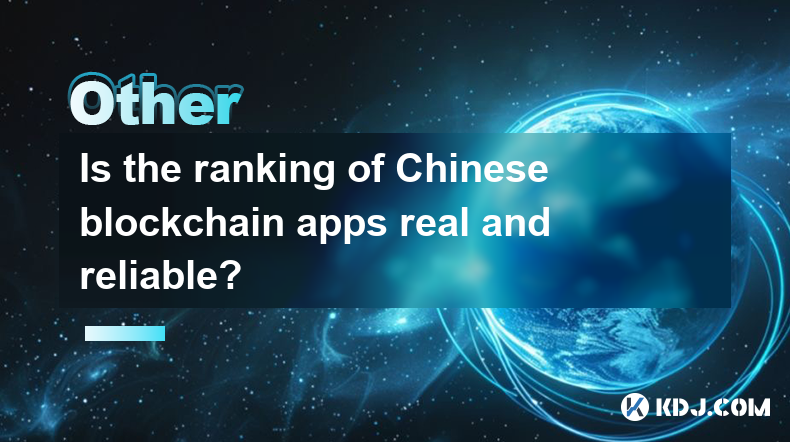
Is the ranking of Chinese blockchain apps real and reliable?
Apr 04,2025 at 09:01pm
The ranking of Chinese blockchain apps has become a topic of interest for many in the cryptocurrency community, as it provides insights into the popularity and adoption of blockchain technology within China. However, the reliability and authenticity of these rankings are often questioned. This article aims to delve into the factors that influence these ...
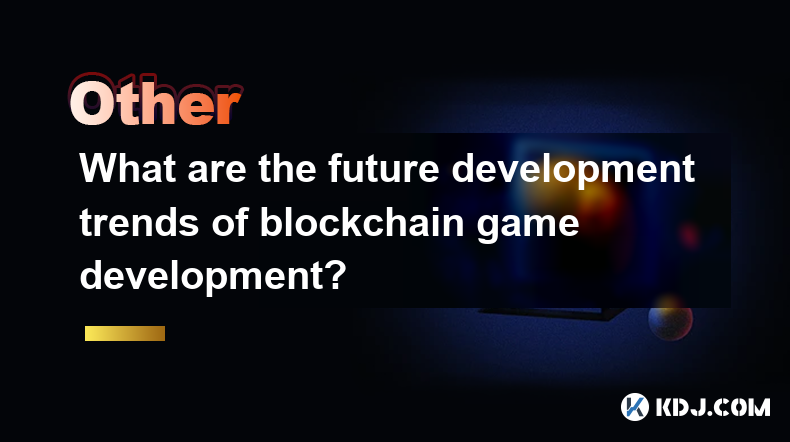
What are the future development trends of blockchain game development?
Apr 03,2025 at 05:00am
Blockchain technology has revolutionized various industries, and gaming is no exception. As we look to the future, several trends are set to shape the development of blockchain games. These trends not only promise to enhance the gaming experience but also to integrate blockchain technology more seamlessly into the gaming ecosystem. Let's explore these t...
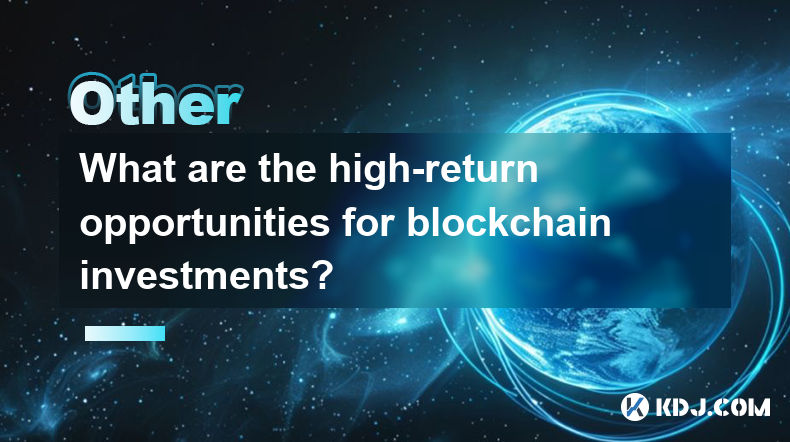
What are the high-return opportunities for blockchain investments?
Apr 05,2025 at 02:35pm
Blockchain technology has revolutionized the financial world, offering numerous high-return investment opportunities. These opportunities span various sectors within the cryptocurrency ecosystem, including cryptocurrencies, decentralized finance (DeFi), non-fungible tokens (NFTs), and blockchain startups. Each of these areas presents unique risks and re...
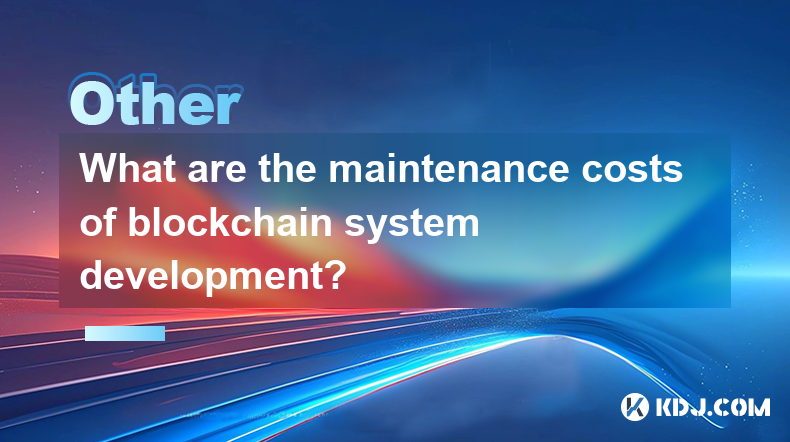
What are the maintenance costs of blockchain system development?
Apr 03,2025 at 06:07pm
The maintenance costs of blockchain system development are multifaceted and depend on various factors. These costs can include technical maintenance, security updates, infrastructure expenses, and personnel costs. Understanding these elements is crucial for anyone planning to develop or maintain a blockchain system. Technical MaintenanceTechnical mainte...
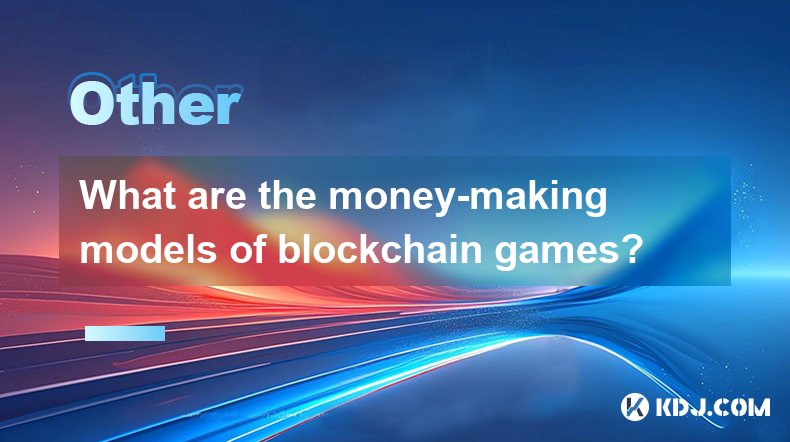
What are the money-making models of blockchain games?
Apr 04,2025 at 02:00pm
Blockchain games have emerged as a revolutionary way for players to earn real money while enjoying their favorite pastime. These games leverage the power of blockchain technology to create unique money-making models that benefit both the players and the developers. In this article, we will explore the various money-making models of blockchain games and ...
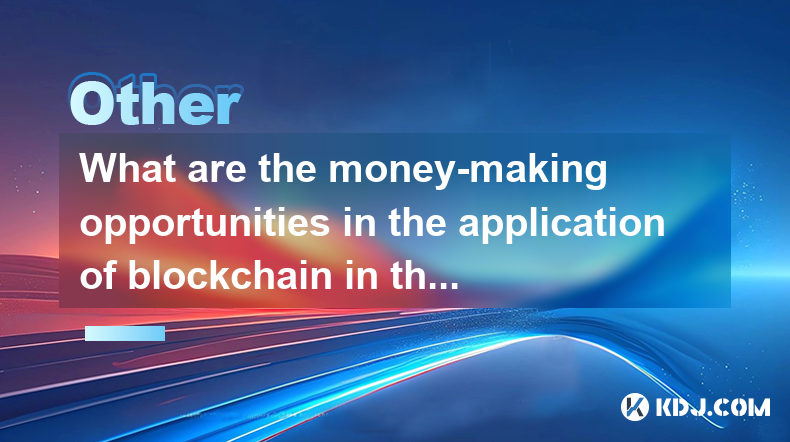
What are the money-making opportunities in the application of blockchain in the field of Internet of Things?
Apr 05,2025 at 10:35pm
The integration of blockchain technology with the Internet of Things (IoT) presents numerous money-making opportunities. Blockchain, with its decentralized and secure nature, can revolutionize how IoT devices interact, manage data, and conduct transactions. This article will explore various avenues where entrepreneurs, developers, and investors can capi...

Is the ranking of Chinese blockchain apps real and reliable?
Apr 04,2025 at 09:01pm
The ranking of Chinese blockchain apps has become a topic of interest for many in the cryptocurrency community, as it provides insights into the popularity and adoption of blockchain technology within China. However, the reliability and authenticity of these rankings are often questioned. This article aims to delve into the factors that influence these ...

What are the future development trends of blockchain game development?
Apr 03,2025 at 05:00am
Blockchain technology has revolutionized various industries, and gaming is no exception. As we look to the future, several trends are set to shape the development of blockchain games. These trends not only promise to enhance the gaming experience but also to integrate blockchain technology more seamlessly into the gaming ecosystem. Let's explore these t...

What are the high-return opportunities for blockchain investments?
Apr 05,2025 at 02:35pm
Blockchain technology has revolutionized the financial world, offering numerous high-return investment opportunities. These opportunities span various sectors within the cryptocurrency ecosystem, including cryptocurrencies, decentralized finance (DeFi), non-fungible tokens (NFTs), and blockchain startups. Each of these areas presents unique risks and re...

What are the maintenance costs of blockchain system development?
Apr 03,2025 at 06:07pm
The maintenance costs of blockchain system development are multifaceted and depend on various factors. These costs can include technical maintenance, security updates, infrastructure expenses, and personnel costs. Understanding these elements is crucial for anyone planning to develop or maintain a blockchain system. Technical MaintenanceTechnical mainte...

What are the money-making models of blockchain games?
Apr 04,2025 at 02:00pm
Blockchain games have emerged as a revolutionary way for players to earn real money while enjoying their favorite pastime. These games leverage the power of blockchain technology to create unique money-making models that benefit both the players and the developers. In this article, we will explore the various money-making models of blockchain games and ...

What are the money-making opportunities in the application of blockchain in the field of Internet of Things?
Apr 05,2025 at 10:35pm
The integration of blockchain technology with the Internet of Things (IoT) presents numerous money-making opportunities. Blockchain, with its decentralized and secure nature, can revolutionize how IoT devices interact, manage data, and conduct transactions. This article will explore various avenues where entrepreneurs, developers, and investors can capi...
See all articles





















































































